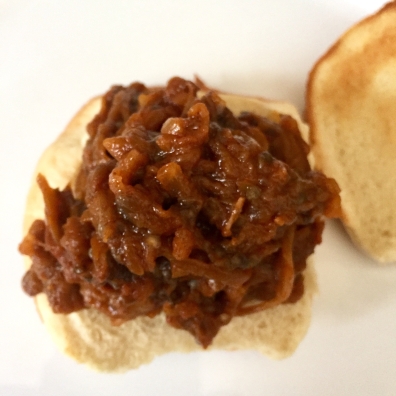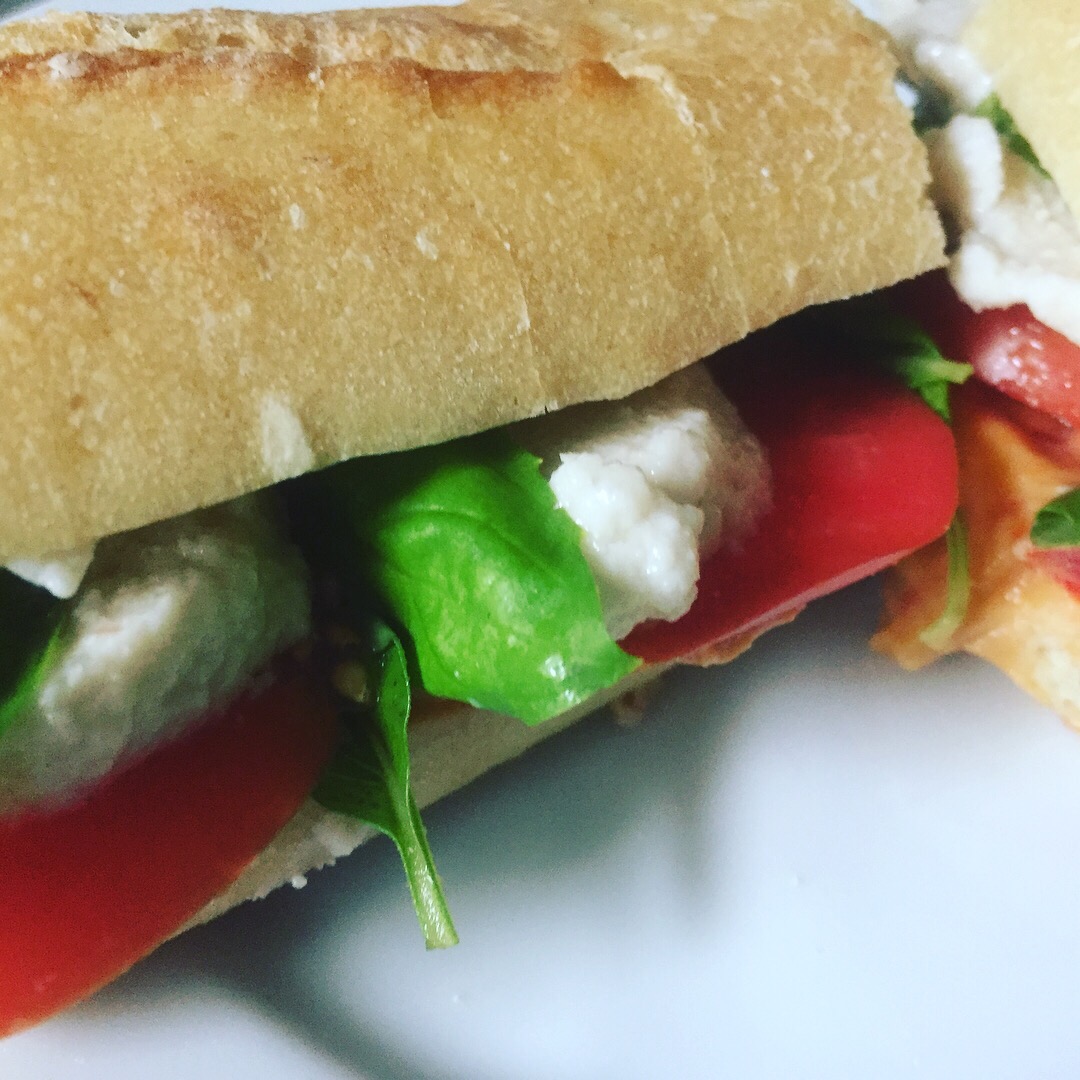
There’s something magical about barbecue or BBQ as we often call it. I am not sure that it can be put into words, and the best you can do is to try it. Perhaps you can start with the recipe below, which is, technically, not a BBQ; but it successfully recreates what using smoke and cooking low and slow (at low temperatures for prolonged periods of time – typical BBQ setup) results in. Or: you can take a look at a very inspirational cookbook in this area “Great Vegan BBQ without a Grill”.
Regardless of what you decide to do, I don’t think you will be disappointed. The basic idea behind a dish like the BBQ Pulled Eggplant below is to take advantage of the natural eggplant texture, which allows it to be pulled into long strips, and to use a rich marinade. Like any great BBQ recipe, this one also takes time. And although there is no need for low and slow cooking here, there is a need for long marinating, which will help add an incredible amount of flavor to the eggplant.
If you are still hesitant, don’t be! The recipe is super simple. You will need to roast the eggplant, which can’t be easier. You will leave the skin on, wash the eggplant, and put it in the hot oven to roast for about an hour. Once eggplant is full roasted, you’ll leave it to cool, then open it up and scoop all the meat out. Some eggplants have quite a lot of seeds in them, and these may look unappetizing – if they do seem unappetizing to you, chuck them out (preferably on your compost pile!). They are actually completely edible and will not change the final flavor at all – so I suggest you keep them in. All the eggplant that you pull ad scoop out goes into the marinade for an hour or more (overnight in the fridge is fine too).
One time and resource saving tip you’ll like is that I use the marinade as a sort of BBQ sauce. As you will see below, the last step is dumping the pulled eggplant and the sauce it’s been marinading in into a hot pan which will help eggplant brown and caramelize, and the marinade thicken into a rich BBQ sauce. So, you will be hitting two birds with one stone!
BBQ Pulled Eggplant
What you’ll need:
- 3 whole eggplants, washed and dried (do not peel)
- 3 tablespoons canola (or other vegetable) oil
- 3 tablespoon reduced-sodium soy sauce (or reduced-sodium tamari sauce for gluten-free option)
- 3 tablespoons chili powder
- 3 tablespoons dry chopped onion (for example these), or 1 tablespoon onion powder
- 2 tablespoons smoked paprika
- 1 tablespoon agave nectar or maple syrup
What you’ll do:
- Preheat the oven to 425 F (220 C).
- Wash and pat dry the eggplant. Place it on a baking sheet lined with some foil or parchment paper and roast for 50-60 minutes. The eggplant should be cooked all the way through.
- Take the eggplant out and let it cool. It does not need to be cooled all the way, but it needs to be cool enough to handle by hand.
- While the eggplant is cooling mix all the rest of the ingredients in a large container big enough to hold the pulled eggplant while it marinates. Set aside.
- When eggplant has cooled of, split the eggplant in half then using a fork start pulling the meat out by sliding the fork lengthwise. Some trips will be shorter, some longer. You can decide which length makes most sense to you – I personally keep it irregular. If your eggplant has a lot of seeds and you rather not use them, pull them out and set them aside to use for something else or compost. At the end of this process, all that will be left will be the eggplant skin. Discard the skin!
- Place all the pulled eggplant into the marinade, cover and marinate for at least an hour – overnight in the fridge works well!
- Final step: bring a large cast iron pan or a heavy frying pan or a skillet over high heat. Let the pan get really hot, lower the heat to medium to medium high, then dump all your marinated eggplant with the marinade into the pan and let it sizzle. The main purpose here is to get some browning going and thicken up the marinade. Keep stirring things around for about 5 minutes, then turn the heat off and serve as sliders (on mini hamburger buns), or as pulled BBQ sandwich on a large buns. Pickles, pickled onions, and/or coleslaw are all great sides to have on hand here. Enjoy!
Copyright © Eat the Vegan Rainbow, 2019


































































